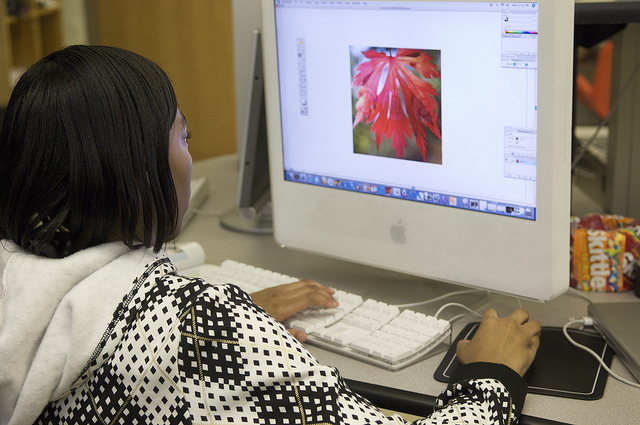
Preview of an upcoming talk
The following is a guest post by Santa Clara University associate professor Laura Robinson, who is one of the Markkula Center for Applied Ethics faculty scholars.Views are her own.
Among the many themes which have dominated the public stage in recent years, two are inextricably intertwined: the growth of inequality and the inexorable rise of communication technologies. We can see two intersecting trends. First, there is a resurgence of inequality, precarity, and economic insecurity for many. At the same time, great wealth and power are being generated by the growth of ICTs. Within this context, the spread of digital technologies has two contradictory effects. On the one hand, it can reinforce preexisting forms of inequality. On the other hand, with the right kinds of technologies in the right hands, it can create opportunities for disadvantaged individuals and groups in ways which would have been previously impossible.
As these trends indicate, digital media opens doors for some, while creating even greater disparities for others. Much of my work on digital inequality examines this double-edged character of digital resources in today’s information society. For economically privileged segments of the population, digital resources can serve as transformational forces remaking many arenas of social life, ameliorating disparities, and opening up opportunities. However, where inequalities are concerned, digital resources can replicate offline patterns of practice and power or beget new disparities unique to the information age. This double-edged character serves as a starting point for all of my analyses of digital inequality that replicates and deepens other forms of economic disadvantage, particularly in our schools.
At the broadest level, my research explores the linkages between economic inequalities, information resources writ large, and the development of information capital among students from traditionally underrepresented populations. My work addresses the central question: How can we understand and alleviate the feedback loop between economic disparities, digital inequalities, and social reproduction? Taking this question as a starting point, my work illuminates the causes and consequences of digital inequality among an understudied population: students in agricultural California.
Based on long-term research in two schools in an agricultural belt of California, my work is driven by the central theoretical question: How do social processes mediate the use of digital media by students with unequal access to resources? Taking my cue from Bourdieu, I develop a theory of the information habitus, a spectrum of orientations internalized by youths with more versus less constrained digital media engagements. I use a broad lens to capture the complex interconnections between youths’ life contexts and their digital media practices. I bring a holistic perspective to bear on digital engagements as they result from institutional and family environments, economies of time and material resources, and social relationships.
As my findings show, all of these factors influence youths’ digital engagements in complex ways that can challenge or perpetuate distributions of power in society. Drawing on Bourdieu’s idea of skholè or playing seriously, I find that highly resourced youths engage with digital media in ways that develop agentic self-confidence. By playing seriously they adopt a self-reliant information orientation that builds skills and ultimately allows them to draw further advantage from their digital engagements. By contrast, those with chronic resource shortages enact the Bourdieuian “taste for the necessary” that engenders both a task-limited orientation and chronic reliance on others. This “taste for the necessary” creates a pattern in which agency always rests outside of disadvantaged youths’ hands and hinders them from developing the capacity to internalize a sense of agency in their encounters with digital media. Ultimately a task-limited orientation inhibits those without resources from building skills and reaping the same benefits from digital media as their more resourced counterparts. These processes translate opportunities and constraints into durable orientations and self-conceptions. As this indicates, the process of internalizing agentic self-conception puts those with resources in a position of even greater relative advantage compared to those who are digitally disadvantaged.
This being said, while much of my work indicates the feedback loop between different forms of inequality, my research also highlights the transformative potential of educational opportunities. My findings also reveal the conditions under which school-based opportunities can act as a catalyst for students to acquire digital skills. In showing how both formal instruction and peer-based learning can compensate for inadequate informational resources at home, my research reveals the ways in which informational inequality is both created and, sometimes, overcome. Thus while recognizing the processes through which digital inequalities issue from and also deepen other forms of disadvantage, my research also reveals the equalizing—and even transformative—potential of the digital classroom to disrupt the feedback loop.
Photo by the US Department of Education, used without modification under a Creative Commons license.
